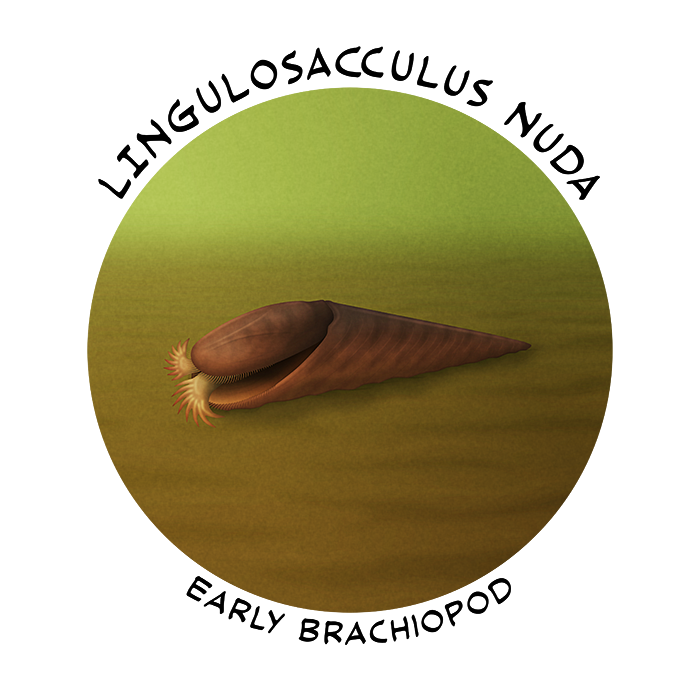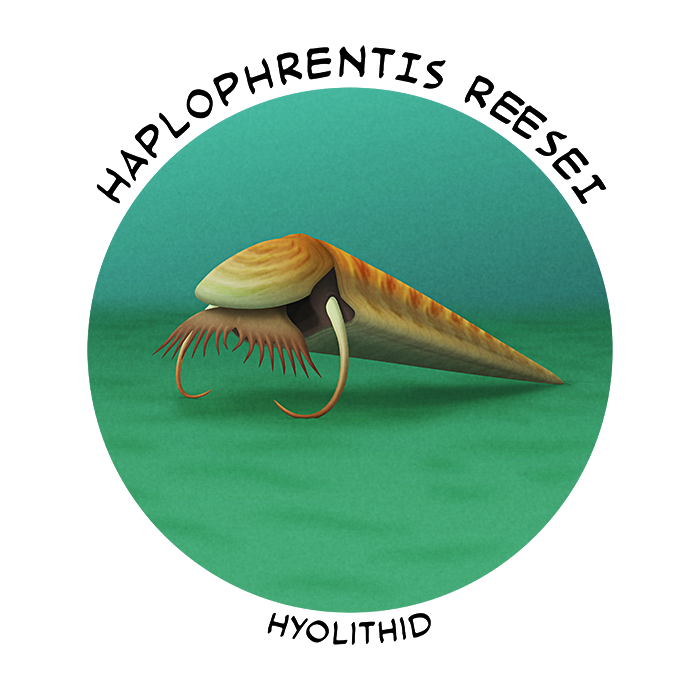Hyoliths were a group of small shelled animals that first appeared in the fossil record just after the start of the Cambrian, about 536 million years ago. They had conical calcareous shells with a lid-like operculum, and some species also featured long curling spines that made them look like ice-cream cones with mammoth tusks.
They were so odd that for a long time their evolutionary relationships were unknown. They were generally accepted to be lophotrochozoans, but some studies considered them to be part of their own unique phylum while others tended to place them as being closely related to molluscs.
It wasn’t until 2017 that well-preserved soft tissue fossils revealed a tentacled feeding structure that resembled a lophophore – and hyoliths finally found their place in the lophotrochozoan family tree as close relatives of brachiopods and horseshoe worms, possibly even being a stem lineage within the brachiopod phylum.
However, this isn’t universally accepted and some recent studies continue to dispute it. The feeding organ of a different hyolith fossil has been interpreted as not being a lophophore, classifying the group as an early lophotrochozoan stem lineage, while an analysis of shell microstructure has instead suggested realigning them with molluscs. I’m grouping them with brachiopods here, but future discoveries might still make this obsolete.

Lingulosacculus nuda might represent another possible link between brachiopods and hyoliths.
Discovered in the Mural Formation in Alberta, Canada (~524-522 million years ago), it was about 4cm long (1.6″) and had a long conical shell that was either poorly-mineralized or completely unmineralized.
Its position within brachiozoan evolution is uncertain. It was originally proposed as a stem-phoronid, but other analyses place it as a stem-brachiopod, an early linguliform brachiopod related to lingulellotretids, or possibly a stem-hyolith.
The earliest true hyoliths were the conical orthothecids, which mostly lived resting on top of the seafloor feeding on organic detritus around themselves. A few have also been found vertically oriented in the sediment, suggesting they may have been filter-feeders collecting particles from surrounding water currents.
Later members of the lineage, the hyolithids, developed distinctive long tusk-like spines on each side of their opercula. These moveable structures have been termed “helens” and were probably used as stilts, holding up the front end of the animal slightly above the seafloor.
There’s also some evidence that helens gave hyoliths the ability to move themselves around, albeit probably rather awkwardly. They may have dug out shallow scrape-like “burrows” in the surface of the seafloor to shelter from stronger currents that could overturn them, and clusters of individuals found around carcasses of larger animals indicate they might have been opportunistic scavengers.

Haplophrentis reesei was a typical hyolithid, known from Utah and Idaho, USA, about 509-504 million years ago. A closely related species, Haplophrentis carinatus, is also known from Canada (~508 million years ago) and southwest China (~516-513 million years ago).
Up to about 6cm long (2’4″), this hyolith was one of the first found to preserve soft tissue feeding organs, showing up to 16 tentacles in a lophophore-like arrangement.
Whatever they actually were, the hyoliths were highly successful animals for a time, found abundantly worldwide for most of the Cambrian. They later began to decline, but still hung on throughout the rest of the Paleozoic and only finally went completely extinct during the catastrophic “Great Dying” mass extinction at the end of the Permian, about 252 million years ago.
